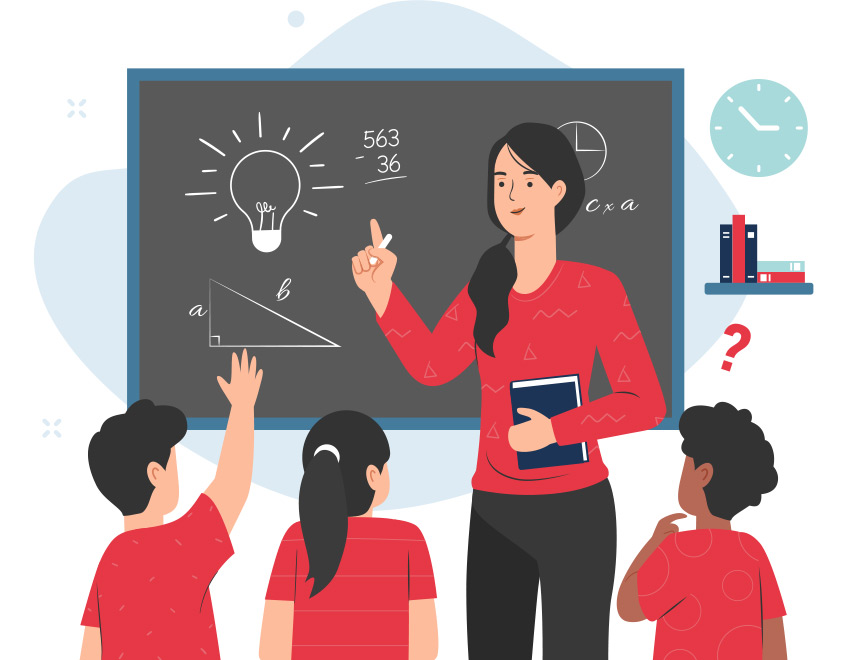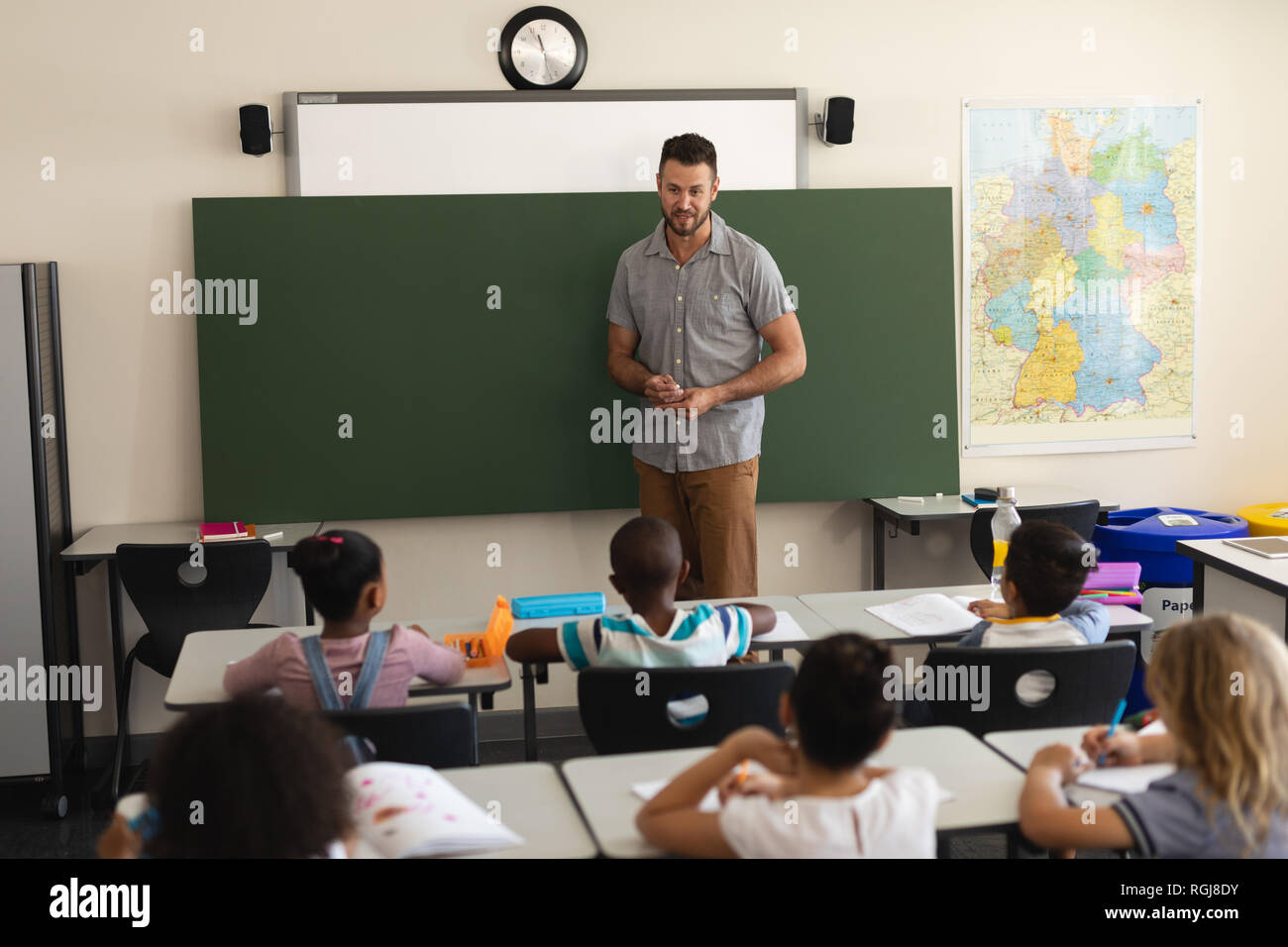Comprehensive Primary Science Tuition Singapore for Primary School Students
Comprehensive Primary Science Tuition Singapore for Primary School Students
Blog Article
A Comprehensive Overview to the Various Knowing Methods in Primary Science Guideline
The exploration of diverse discovering approaches in main scientific research guideline provides a possibility for educators to boost pupil engagement and understanding considerably. By checking out hands-on knowing strategies, inquiry-based strategies, and joint methods, we can determine efficient practices that deal with different learning designs. In addition, the combination of innovation and set apart instruction plays a vital role in cultivating a comprehensive environment. Nevertheless, the concern continues to be: just how can these approaches be properly implemented in the class to maximize their impact? The answer depends on a better assessment of each technique and its ramifications for teaching scientific research.

Hands-On Learning Techniques
Hands-on knowing methods play an essential role in key scientific research direction, engaging pupils in active expedition and experimentation. These techniques enable learners to engage straight with materials and sensations, fostering a deeper understanding of scientific ideas. By utilizing manipulatives, versions, and real-life experiments, educators create an environment where trainees can observe, assume, and examine their concepts.
Such strategies not only enhance comprehension yet likewise cultivate critical thinking and analytical abilities. When trainees join tasks like developing easy equipments, planting seeds, or performing chemical responses, they are encouraged to ask questions and look for responses via their very own observations. This experiential method aids to demystify complicated scientific concepts, making them much more relatable and accessible.
In addition, hands-on knowing advertises collaboration amongst peers, as pupils frequently operate in groups to conduct experiments or share findings. This synergy not just improves their knowing experience however additionally creates important social skills. Eventually, incorporating hands-on strategies in primary scientific research instruction promotes a lifelong love of learning and inquisitiveness concerning the all-natural world, laying a strong structure for future scholastic pursuits in scientific research and past.
Inquiry-Based Discovering
Inquiry-based knowing is an educational technique that motivates trainees to ask concerns, examine phenomena, and create their very own understanding of clinical concepts. This approach changes the focus from traditional teacher-led direction to an extra student-centered experience, where learners take the effort in their instructional trip. By fostering interest, inquiry-based understanding promotes deeper involvement with the product, allowing trainees to check out subjects in a meaningful context.
In method, this technique often includes hands-on experiments, monitorings, and essential thinking activities that align carefully with the clinical technique. Pupils are urged to create theories, layout investigations, and analyze data, which cultivates vital abilities such as logical and problem-solving thinking. The role of the instructor in this framework is to assist in exploration, leading trainees via the questions procedure while urging independent thought and cooperation.
Furthermore, inquiry-based knowing supports a feeling of possession over the discovering procedure, inspiring students to pursue knowledge actively. This approach not just enhances understanding of scientific principles however likewise cultivates a lifelong love for learning, outfitting students with the skills essential to navigate a significantly intricate world.
Collaborative Learning Approaches
Collaborative discovering techniques empower trainees to take part in meaningful communications with peers, promoting a shared obligation for their educational outcomes. In key science instruction, these strategies urge learners to function together to discover clinical concepts, fix troubles, and conduct experiments (primary science tuition Singapore). By joining team tasks, students can leverage varied viewpoints, allowing for richer understanding and retention of scientific expertise
One secret element of collective learning is the focus on communication abilities. Pupils need to verbalize go to this website their ideas, listen proactively to others, and work out concepts, every one of which are vital competencies in both scholastic and real-world contexts. This social communication not only improves their understanding of clinical principles however additionally advertises teamwork and dispute resolution abilities.
In addition, joint learning typically results in enhanced inspiration and interaction. They are more likely to take ownership of their understanding journey when students see the worth of their payments within a team. Educators can facilitate this process deliberately organized group tasks that line up with educational program goals while providing guidance on reliable cooperation techniques. Overall, integrating collaborative knowing methods in primary scientific research instruction cultivates a dynamic learning environment that prepares pupils for future scholastic and social difficulties.
Technology Assimilation in Science
The combination of innovation in main scientific research direction improves discovering experiences by giving innovative tools and sources that support numerous training techniques, consisting of collaborative knowing - primary science tuition Singapore. Using electronic platforms, simulations, and interactive applications allows students to engage deeply with scientific concepts, facilitating an extra hands-on technique to learning
Digital research laboratories, for example, allow students to conduct experiments securely and effectively, advertising inquiry-based discovering. These tools can simulate real-world clinical scenarios, permitting students to visualize intricate processes that would certainly be tough to reproduce in a typical classroom setup. Moreover, technology cultivates communication and cooperation among students, as they can share searchings for and collaborate on tasks through on the internet systems.
In addition, multimedia presentations and academic video clips can improve lessons by dealing with diverse learning designs, making abstract principles extra available. Information analysis devices also equip students to accumulate and translate clinical data, strengthening essential believing skills. Generally, the critical incorporation of technology in main science guideline not just enhances involvement however additionally prepares trainees for a technically sophisticated society, furnishing them with crucial abilities for future scientific endeavors.
Set Apart Direction Strategies
Separated direction methods are important for dealing with the diverse demands of students in key scientific research education. These strategies enable teachers to tailor their mentor approaches to fit differing capacities, interests, and learning designs within the class. By employing separated direction, check my reference teachers can produce an inclusive atmosphere that fosters interaction and improves understanding of clinical principles.
One efficient technique is to utilize versatile organizing, which enables trainees to collaborate with peers at comparable skill levels or with varying perspectives. This technique urges peer understanding and advertises crucial reasoning. Additionally, using options in tasks can encourage students, permitting them to pick jobs that reverberate with their interests while still meeting curricular objectives.
Moreover, including tiered tasks is an additional important technique. Deliberately jobs with differing degrees of complexity, educators can make sure that all trainees are appropriately tested, despite their effectiveness. Utilizing developmental evaluations to evaluate understanding additional makes it possible for educators to adjust their training methods dynamically, guaranteeing that each learner gets the assistance they need.
Ultimately, executing set apart direction methods in primary scientific research education and learning not just enhances pupil discovering results however likewise cultivates an enthusiasm for scientific research, preparing students for future academic quests.

Verdict
In summary, reliable primary science direction necessitates a complex method that incorporates hands-on discovering, inquiry-based techniques, and collaborative techniques. The combination of technology and differentiated direction better satisfies diverse learning designs, promoting a setting for exploration and vital reasoning. By applying these approaches, educators can enhance student interaction and comprehension, ultimately supporting a long-lasting enthusiasm for scientific research and inquiry. Such detailed techniques are vital for establishing notified and curious future scientists.
The expedition of diverse learning techniques in key scientific research direction provides a chance for instructors to enhance trainee engagement and understanding considerably.Hands-on understanding methods why not try these out play a pivotal function in main scientific research direction, engaging trainees in energetic exploration and testing.Inquiry-based discovering is an educational technique that motivates pupils to ask inquiries, examine phenomena, and construct their very own understanding of scientific concepts.Joint knowing methods equip pupils to engage in significant interactions with peers, promoting a common obligation for their instructional results. In general, integrating collaborative knowing strategies in key scientific research guideline cultivates a dynamic knowing setting that prepares pupils for future academic and social difficulties.
Report this page